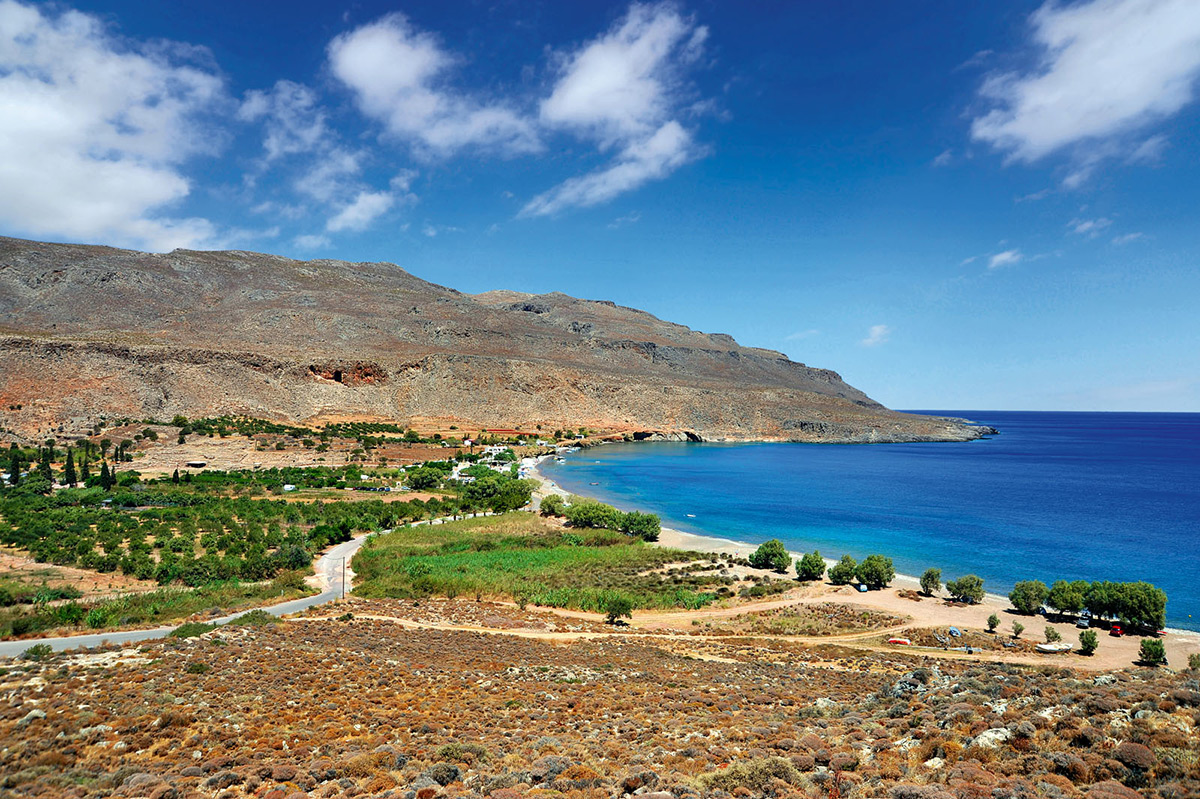A small seaside settlement with a wonderful and peaceful pebble beach, and blue crystalline waters with a fascinating sea-bed, just right for exploration.
It is made up of two small coves with tamarisks for shade; not really organized and thus not many umbrellas and sunbeds are to be seen.

Nonetheless, near it are some tavernas, cafeterias and rent-rooms, as well as some basic facilities like a chemist and a minimarket.
Whichever bay takes your fancy, you will be certain of a quiet swim: the second of them, with two caves, is approached by a steep flight of steps.
When here, you will be sure to visit the important archaeological site, the Minoan Palace and town, and other attractions. Sizeable at 8000 sq m (though smaller than Knossos, Festos and Malia), it has main phases of occupation between 1900 and 1500 BC.
It is because of the importance of the archaeology in this area that the beach and village remain relatively undeveloped.
The town is set at the mouth of an imposing gorge with rare flora and fauna as well as some impressive geological formations: the canyon is called the Gorge of Zakros or of the Dead (there are Minoan tombs cut into its sides). It runs from Upper/Epano to the shore at Lower/Kato Zakros.
The path within it is part of the E4 Walking Trail: if you continue along it northwards from Zakros towards Karoumes, you will pass by the Pelekita cave, one of the largest in Crete, with a quarry by it.
To get to Kato Zakros from Siteia, you first take the road east to Palaikastro, and then the turning to Zakros. It is an interesting journey, as it passes through small picturesque villages.






